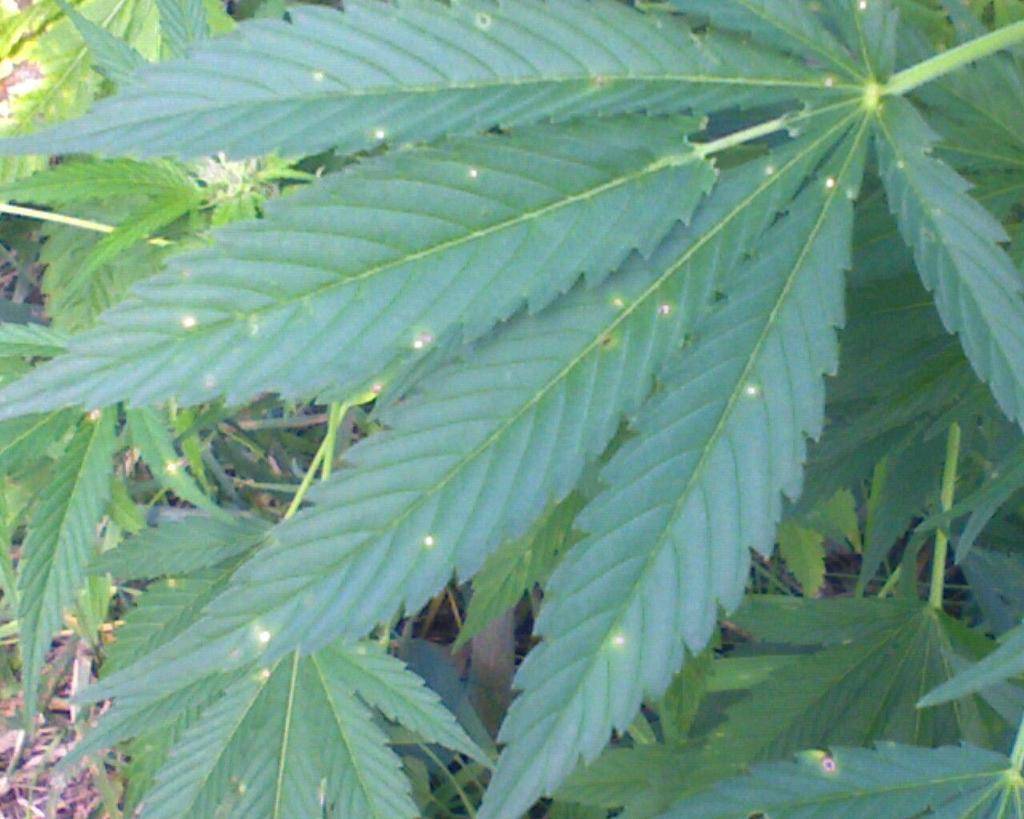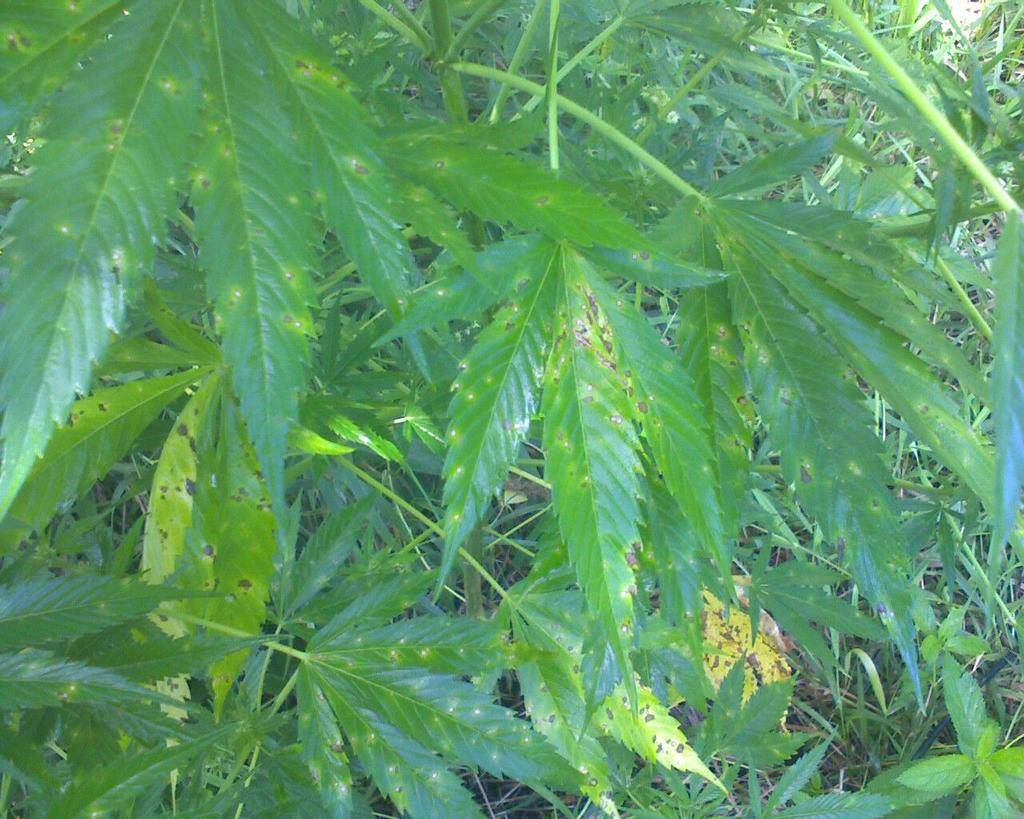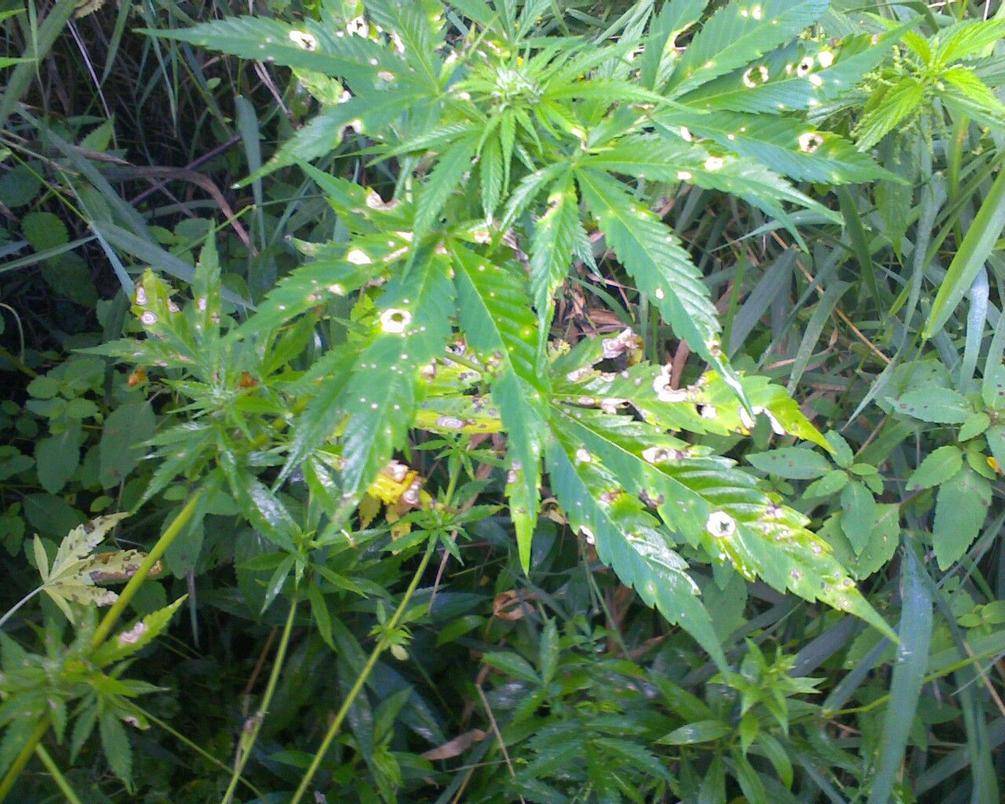Ok, below is a description of leaf spot and I have had it the last 2 years. For the life of me I cant figure out why more Guerrillas have not had it. It would not be a disease that back yard growers deal with primarily guerillas. I am now a self ordained expert but there is ZERO info (little bit of an exaggeration) on this web site.
I am looking for true anecdotal experience because this disease makes mold look like a little girl of a MJ problem. It can NOT be cured and depending on how bad it hits it will defoliate your whole crop. It also over-winters so you can have it for years at one location.
Looking for old or new guerillas that have dealt with this disease I just want to hear how you managed it because that’s all you can do “manage it” not cure it? My understanding is the only way to deal with it is through preventive measures.
It is impossible for a guerrilla to remove all ground litter. Sure you can do it around your plants but not over 5 acres or more of land and the spores are passed through the air so cleaning up around your plants will only help so much. I don’t want to loose some of my favorite spots so I am looking for real life anecdotes of how other guerillas handled this if there is any.
Come on fellow guerrillas help a brother out its weird that this disease cannot be found via the sites search engine I really feel like others have had this.
HOW DID YOU FIX THE PROBLEM????
1. Move to different site? (It's in 4 plots at 4 different locations for 2 years over more than a 10 square mile radius so moving wont help me anyways.)
2. Got lucky had a dry year? ( I understand but what about next year or the next?)
BACTERIAL LEAF SPOT
Symptoms: Infected plants have brown or black water-soaked spots on the foliage, sometimes with a yellow halo, usually uniform in size. The spots enlarge and will run together under wet conditions. Under dry conditions the spots have a speckled appearance. As spots become more numerous, entire leaves may yellow, wither and drop. Members of the Prunus family (cherry, plum, almond, apricot, peach) are particularly susceptible. The fruit may appear spotted or have sunken brown areas. Bacterial leaf spot will also attack tomatoes, peppers and cabbage family crops in vegetable gardens.
Bacterial leaf spot is most active when there is plenty of moisture and warm temperatures. During the summer months, especially if plants are watered by overhead sprinklers, sufficient moisture may be present for infection when the bacteria are splashed or blown on to leaves. Wind and rain transmit the bacteria to plants.
This disease overwinters in the soil around infected plants as well as on garden debris and seeds. The disease will also remain in the twig cankers, leaves, stems and fruit of infected trees.
Control: Choose resistant varieties if possible. Keep the soil under the tree clean and rake up fallen fruit. Prune or stake plants to improve air circulation. Make sure to disinfect your pruning equipment (one part bleach to 4 parts water) after each cut. Use a thick layer of mulch to cover the soil after you have raked and cleaned it well. The mulch will prevent the fungus spores from splashing back up onto the leaves. Water in the early morning hours (avoiding overhead watering if possible) to give the plants time to dry out during the day. Avoid overwatering.
There is no cure for plants infected with bacterial leaf spot. Apply copper-based fungicides weekly at first sign of disease to prevent its spread. This organic fungicide will not kill leaf spot, but prevents the fungus spores from germinating. Applications of Fire Blight Spray will also control the disease. Use as a preventive treatment or apply at first sign of water soaked leaves.
Starts out looking quite tame and nothing to worry about.

A week or so later

Then its a train wreck in 3-4 weeks
 .
.
I am looking for true anecdotal experience because this disease makes mold look like a little girl of a MJ problem. It can NOT be cured and depending on how bad it hits it will defoliate your whole crop. It also over-winters so you can have it for years at one location.
Looking for old or new guerillas that have dealt with this disease I just want to hear how you managed it because that’s all you can do “manage it” not cure it? My understanding is the only way to deal with it is through preventive measures.
It is impossible for a guerrilla to remove all ground litter. Sure you can do it around your plants but not over 5 acres or more of land and the spores are passed through the air so cleaning up around your plants will only help so much. I don’t want to loose some of my favorite spots so I am looking for real life anecdotes of how other guerillas handled this if there is any.
Come on fellow guerrillas help a brother out its weird that this disease cannot be found via the sites search engine I really feel like others have had this.
HOW DID YOU FIX THE PROBLEM????
1. Move to different site? (It's in 4 plots at 4 different locations for 2 years over more than a 10 square mile radius so moving wont help me anyways.)
2. Got lucky had a dry year? ( I understand but what about next year or the next?)
BACTERIAL LEAF SPOT
Symptoms: Infected plants have brown or black water-soaked spots on the foliage, sometimes with a yellow halo, usually uniform in size. The spots enlarge and will run together under wet conditions. Under dry conditions the spots have a speckled appearance. As spots become more numerous, entire leaves may yellow, wither and drop. Members of the Prunus family (cherry, plum, almond, apricot, peach) are particularly susceptible. The fruit may appear spotted or have sunken brown areas. Bacterial leaf spot will also attack tomatoes, peppers and cabbage family crops in vegetable gardens.
Bacterial leaf spot is most active when there is plenty of moisture and warm temperatures. During the summer months, especially if plants are watered by overhead sprinklers, sufficient moisture may be present for infection when the bacteria are splashed or blown on to leaves. Wind and rain transmit the bacteria to plants.
This disease overwinters in the soil around infected plants as well as on garden debris and seeds. The disease will also remain in the twig cankers, leaves, stems and fruit of infected trees.
Control: Choose resistant varieties if possible. Keep the soil under the tree clean and rake up fallen fruit. Prune or stake plants to improve air circulation. Make sure to disinfect your pruning equipment (one part bleach to 4 parts water) after each cut. Use a thick layer of mulch to cover the soil after you have raked and cleaned it well. The mulch will prevent the fungus spores from splashing back up onto the leaves. Water in the early morning hours (avoiding overhead watering if possible) to give the plants time to dry out during the day. Avoid overwatering.
There is no cure for plants infected with bacterial leaf spot. Apply copper-based fungicides weekly at first sign of disease to prevent its spread. This organic fungicide will not kill leaf spot, but prevents the fungus spores from germinating. Applications of Fire Blight Spray will also control the disease. Use as a preventive treatment or apply at first sign of water soaked leaves.
Starts out looking quite tame and nothing to worry about.
A week or so later
Then its a train wreck in 3-4 weeks







